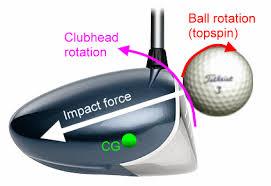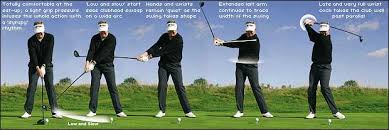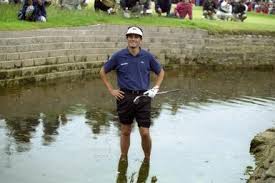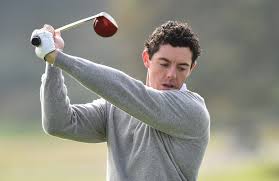Sand Traps have always been a mystery to many of us because they are always changing: wet, dry, fluffy, hard. They change with the course and the weather as they dry out. Then you have lies that are uphill, downhill, sitting in a foot print, “fried egg” or buried in the overhanging edge. I was glad to see that Golf Digest recently gave us a simple set of rules to escape the 2 types of sand.
• Type A: Deep, soft, dry sand
• Type B: Shallow, firm, wet sand
Type A Sand: In soft fluffy sand it is very easy to take too much sand and leave the ball in the bunker. Bounce is your best friend here. You need to be able to make a full swing without the fear of digging deep into the sand. Here are a few tips to maximize the amount of effective bounce at impact (for righties).

This California view may be gorgeous but if you land in these bunks, your full swing in that soft sand better catch some sand before the ball or your are swimming.
• Stand with your ball forward of center
• Wiggle your feet down for stability and compensate for depth by gripping down.
• Take an open stance (toes lined-up left) and club face open (edge lined up right of target)
• Hands even or slightly behind the ball at address
• Full follow through with the club face pointing at the sky and take sand before and after the ball.
Type B Sand: Firm sand or shallow sand does not allow for the club to dig very much. Thus, it is very easy for the club to bounce right off the sand at impact and hit the middle of the ball, sending it to unknown territory.
• Line up your ball in the middle of your stance.
• Club face square to your target.
• Hands even or slightly forward of ball.
• Finish your swing with a short, low follow through.
• For green side shots you still need to take sand before and after the ball (but a lot less in firm sand).
Old Sand Tip: Swing to lift the sand, your ball and an imaginary quarter sitting beyond your ball.
Other sand tips include using a Gap Wedge or Pitching Wedge for longer shots where you take less sand or a clean hit by impacting the ball first. Using a longer club is no advantage if you hit the bunker lip on your way out. Buried in the overhang? Pound your sand wedge directly into the bottom of the ball to pop it up & out or you should take an unplayable penalty with a drop in the trap if the top edge is overhanging.

COMMON SENSE PREVAILS from the Golf Gods: Rules of Golf Update, January 1 2017
On a green if a ball is accidently moved by a practice swing, a kick, a drop of a ball marker or the pickup of a ball marker by any player, the ball is replaced and there is NO stroke penalty.
On the green if your ball is move by wind or rain or gravity, you must play the ball as it lies and there is NO stroke penalty.
On the fairway, rough or bunker (anywhere off the green or teeing surface) if a ball is moved by activity of the player, the ball is replaced and the player gets a ONE stroke penalty.
On the teeing surface if a ball is moved by mistake (during the setup or practice swing) it can be replaced WITHOUT penalty.
Practice makes perfect with GOLFSTR+ in bunkers too. Your leading wrist stays flat throughout your follow through. No SCOOPING. Buy one today at www.golfstr.com










![GOLFSTR+ is 6 swing training aids in 1 product. Practice daily to learn to swing with a straight leading arm and flat wrist for your full swing, chipping and putting. Also a great lag trainer. [CLICK TO ENLARGE]](https://golfstr.com/wp-content/uploads/2016/08/Octopus-Golfer-revised-300x235.jpg)